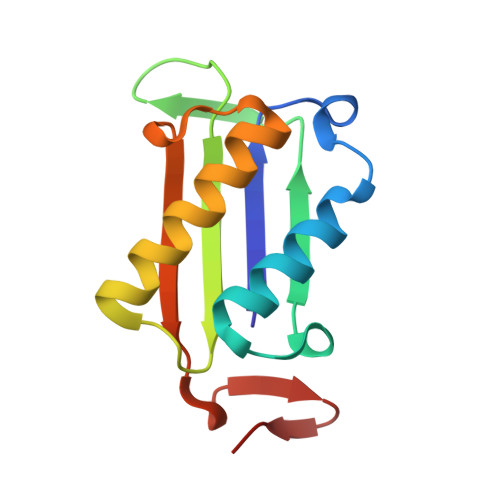A Cysteine Variant at an Allosteric Site Alters MIF Dynamics and Biological Function in Homo- and Heterotrimeric Assemblies.
Skeens, E., Pantouris, G., Shah, D., Manjula, R., Ombrello, M.J., Maluf, N.K., Bhandari, V., Lisi, G.P., Lolis, E.J.(2022) Front Mol Biosci 9: 783669-783669
- PubMed: 35252348
- DOI: https://doi.org/10.3389/fmolb.2022.783669
- Primary Citation of Related Structures:
7KQX - PubMed Abstract:
Macrophage migration inhibitory factor (MIF) is an inflammatory protein with various non-overlapping functions. It is not only conserved in mammals, but it is found in parasites, fish, and plants. Human MIF is a homotrimer with an enzymatic cavity between two subunits with Pro1 as a catalytic base, activates the receptors CD74, CXCR2, and CXCR4, has functional interactions in the cytosol, and is reported to be a nuclease. There is a solvent channel down its 3-fold axis with a recently identified gating residue as an allosteric site important for regulating, to different extents, the enzymatic activity and CD74 binding and signaling. In this study we explore the consequence of converting the allosteric residue Tyr99 to cysteine (Y99C) and characterize its crystallographic structure, NMR dynamics, stability, CD74 function, and enzymatic activity. In addition to the homotrimeric variant, we develop strategies for expressing and purifying a heterotrimeric variant consisting of mixed wild type and Y99C for characterization of the allosteric site to provide more insight.
Organizational Affiliation:
Department of Molecular Biology, Cell Biology, and Biochemistry, Brown University, Providence, RI, United States.

















